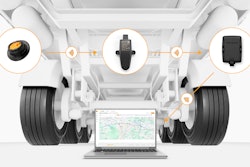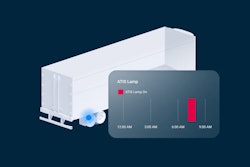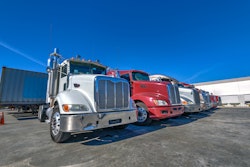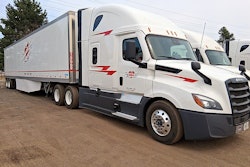Drivers don’t wake up in the morning intending to have an accident, but things happen.
Bison Transport Director of Safety and Driver Development Garth Pitzel said the best way to mitigate that is by using data from telematics to identify potential risk. A 2023 survey from CCJ found that fleets are leaning on their telematics to improve driver safety performance.
But those who don’t will pay the price, said Pam Jones, director of strategic accounts at Fusable’s Central Analysis Bureau, last week during the Truckload Carriers Association annual convention held in Phoenix.
“Just like the drivers that chose not to work for a company that's using cameras – they've selected themselves out of the process – some fleets are going to self-select out of the telematics piece, and the non-participators are going to be the ones paying the higher premiums to cover the discounts for those fleets that do participate in it,” Jones said.
Jones and Pitzel discussed how sharing telematics data with insurers can lead to better coverage and lower costs because of its potential to improve safety by offering actionable insights into driver behavior, fleet performance and potential risks.
But Pitzel, who “monitors the hell out of data,” said that data doesn’t help unless a fleet takes the time to understand it and use it to its benefit.
In fact, if data is turned over to an insurer without context, it could negatively impact a fleet.
“If they're only looking at numbers, they will maybe look at (something) as a problem when it really isn't a problem,” Pitzel said. “Insurance … they're the third party; they don't understand. That's why there's got to be that really good partnership so that you are looking at it in its entirety and not focusing on something that isn’t necessarily an issue.”
He said when Bison made a fundamental change to its safety program, accidents didn’t come down for the first year, but the severity changed greatly.
The carrier began focusing heavily on improving following distance, and from 2023 to 2024, it dropped 11% - a big positive considering miles went up 13%, Pitzel said. Though instances of following distance improved, telematics data showed that hard braking incidents increased, which didn’t make sense. He had to look beyond the telematics data to ascertain that certain drivers were riskier in certain situations like tam passes, which was the cause of the hard brakes, not following too close.
[RELATED: Telematics improves safety, reduces insurance costs]
“It’s so important to get the whole story,” Pitzel said. “We track hard brakes, we track speed, we track all of these events. We track how many counseling events we have with our drivers. We're tracking all of that because it’s so important to get that picture.”
He said you can't rely solely on the data.
“Our preventable accident per million miles in the last five years went in half. Now that doesn't necessarily appear in my telematics information,” he added. “Telematics can tell you some great things and what's happening, but at the end of the day, there's other information.”
Jones said other important information insurers look at include where a fleet operates and stores its equipment.
“You have 10,000 miles in Illinois, but are those 10,000 miles in the loop, or are those 10,000 miles in corn country,” she said. “Where are you garaging your equipment: Small Town, USA or large cities? It all plays a part.”
Usage-based insurance is becoming very prevalent, she added, and insurers are incentivizing safer fleets with more accurate data.
Insurance premiums in the trucking industry have jumped 47% in the last decade, according to a recent report from Gruber Law. In 2024 alone, fleets saw a 12.5% hike forcing over 35,000 carriers off the road. With post-accident insurance premiums spiking more than 50% and small fleets paying up to three times more per mile than the largest carriers, insurers are becoming increasingly hesitant to cover trucking companies at all, the study said.
Gruber Law contends that the cost of insuring a truck has become so high that many insurers are exiting the market, while the remaining ones are tightening their terms.
“Insurance companies are looking for solutions to be able to affect their bottom line, and all of us need to be concerned about that ... If we can go in and share that data … they're going to get expanded visibility,” Jones said. “Understand that data, and you can help them better understand your story and use the information better.”













